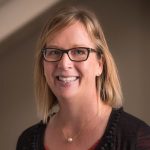Join SCAS for “Public Uses of Household Spaces: Archaeological Data Recovery of Room 102 Rancho San Andres Castro Adobe,” a talk by Sarah Peelo, Ph.D., Albion Environmental, Inc. The talk will be held on April 12, 2018, at 7:30 pm at the Santa Cruz Live Oak Grange Hall at 1900 17th Ave, Santa Cruz, CA 95062 (click here for Google Maps directions).
 California State Parks, in collaboration with Friends of Santa Cruz State Parks, is currently restoring the Rancho San Andrés Castro Adobe, Watsonville, California (CA-SCR-209H). Access to and strengthening of the second floor fandango room is of considerable importance to the interpretation of the historic Adobe. To meet this goal, Friends installed an Americans with Disabilities Act compliant lift and interior staircase within Room 102. Because preservation in place was not feasible as mitigation for the impacts to this significant historical resource, Albion Environmental, Inc. designed and executed a plan for data recovery. These recent excavations suggest that the Castro Adobe represents Mexican Period rancho architecture, with cobble foundations, adobe walls, and a prepared adobe floor. Above the adobe floor a layer of loose cultural fill was identified, containing artifacts dating from the Mexican Period through the Modern Era. This stratum was likely created by soil and artifacts falling between the wood floor boards within the room, and by rodent activities. Analysis of recovered artifacts suggests that Room 102 was more than just a bedroom for Castro boys. While we did identify artifacts likely used by children, including puzzle pieces, checkers, doll parts, and marbles, there were also a number of artifacts that were likely made and used by other members of the Castro community. In particular, the assemblage included artifacts likely related to indigenous practices, providing a lens into understanding the often undocumented experiences of indigenous rancho laborers. This research highlights that the Castro Adobe was used by the diverse community living and working at Rancho San Andrés, illustrating the very public nature of adobe structures during the Mexican Rancho Period.
California State Parks, in collaboration with Friends of Santa Cruz State Parks, is currently restoring the Rancho San Andrés Castro Adobe, Watsonville, California (CA-SCR-209H). Access to and strengthening of the second floor fandango room is of considerable importance to the interpretation of the historic Adobe. To meet this goal, Friends installed an Americans with Disabilities Act compliant lift and interior staircase within Room 102. Because preservation in place was not feasible as mitigation for the impacts to this significant historical resource, Albion Environmental, Inc. designed and executed a plan for data recovery. These recent excavations suggest that the Castro Adobe represents Mexican Period rancho architecture, with cobble foundations, adobe walls, and a prepared adobe floor. Above the adobe floor a layer of loose cultural fill was identified, containing artifacts dating from the Mexican Period through the Modern Era. This stratum was likely created by soil and artifacts falling between the wood floor boards within the room, and by rodent activities. Analysis of recovered artifacts suggests that Room 102 was more than just a bedroom for Castro boys. While we did identify artifacts likely used by children, including puzzle pieces, checkers, doll parts, and marbles, there were also a number of artifacts that were likely made and used by other members of the Castro community. In particular, the assemblage included artifacts likely related to indigenous practices, providing a lens into understanding the often undocumented experiences of indigenous rancho laborers. This research highlights that the Castro Adobe was used by the diverse community living and working at Rancho San Andrés, illustrating the very public nature of adobe structures during the Mexican Rancho Period.
 Sarah Peelo is an historical archaeologist with over 15 years of experience working in California. She has worked at a number of California historic sites including Mission Santa Clara de Asís and Mission San Antonio de Padua. Dr. Peelo has developed broad field methodological skills with experience in both landscape investigations using survey and auger testing methodologies, as well as detailed excavation of features, such as refuse pits and adobe house floors. In addition, Dr. Peelo has extensive experience analyzing Mission-, Mexican-, and American- era artifact assemblages and historic records. She also specializes in ceramic analysis and has developed technical expertise in archaeometic analysis of ceramic materials, utilizing techniques such as petrography and electron microprobe analysis. Dr. Peelo’s interests in the archaeology and ethnohistory of colonial California began as an undergraduate at Santa Clara University (1999), and continued as she completed a Master’s degree at Colorado State University (2002), Ph.D. at UC Santa Cruz (2009), and during her postdoctoral positions at UC Davis (2009-2011) and Stanford University (2011-2012). Her ongoing research examines how multiethnic communities negotiated identities during colonial moments, emphasizing the relationship between technology, daily practice, and social identity. Dr. Peelo joined Albion in 2012, and is currently the President of the company.
Sarah Peelo is an historical archaeologist with over 15 years of experience working in California. She has worked at a number of California historic sites including Mission Santa Clara de Asís and Mission San Antonio de Padua. Dr. Peelo has developed broad field methodological skills with experience in both landscape investigations using survey and auger testing methodologies, as well as detailed excavation of features, such as refuse pits and adobe house floors. In addition, Dr. Peelo has extensive experience analyzing Mission-, Mexican-, and American- era artifact assemblages and historic records. She also specializes in ceramic analysis and has developed technical expertise in archaeometic analysis of ceramic materials, utilizing techniques such as petrography and electron microprobe analysis. Dr. Peelo’s interests in the archaeology and ethnohistory of colonial California began as an undergraduate at Santa Clara University (1999), and continued as she completed a Master’s degree at Colorado State University (2002), Ph.D. at UC Santa Cruz (2009), and during her postdoctoral positions at UC Davis (2009-2011) and Stanford University (2011-2012). Her ongoing research examines how multiethnic communities negotiated identities during colonial moments, emphasizing the relationship between technology, daily practice, and social identity. Dr. Peelo joined Albion in 2012, and is currently the President of the company.


